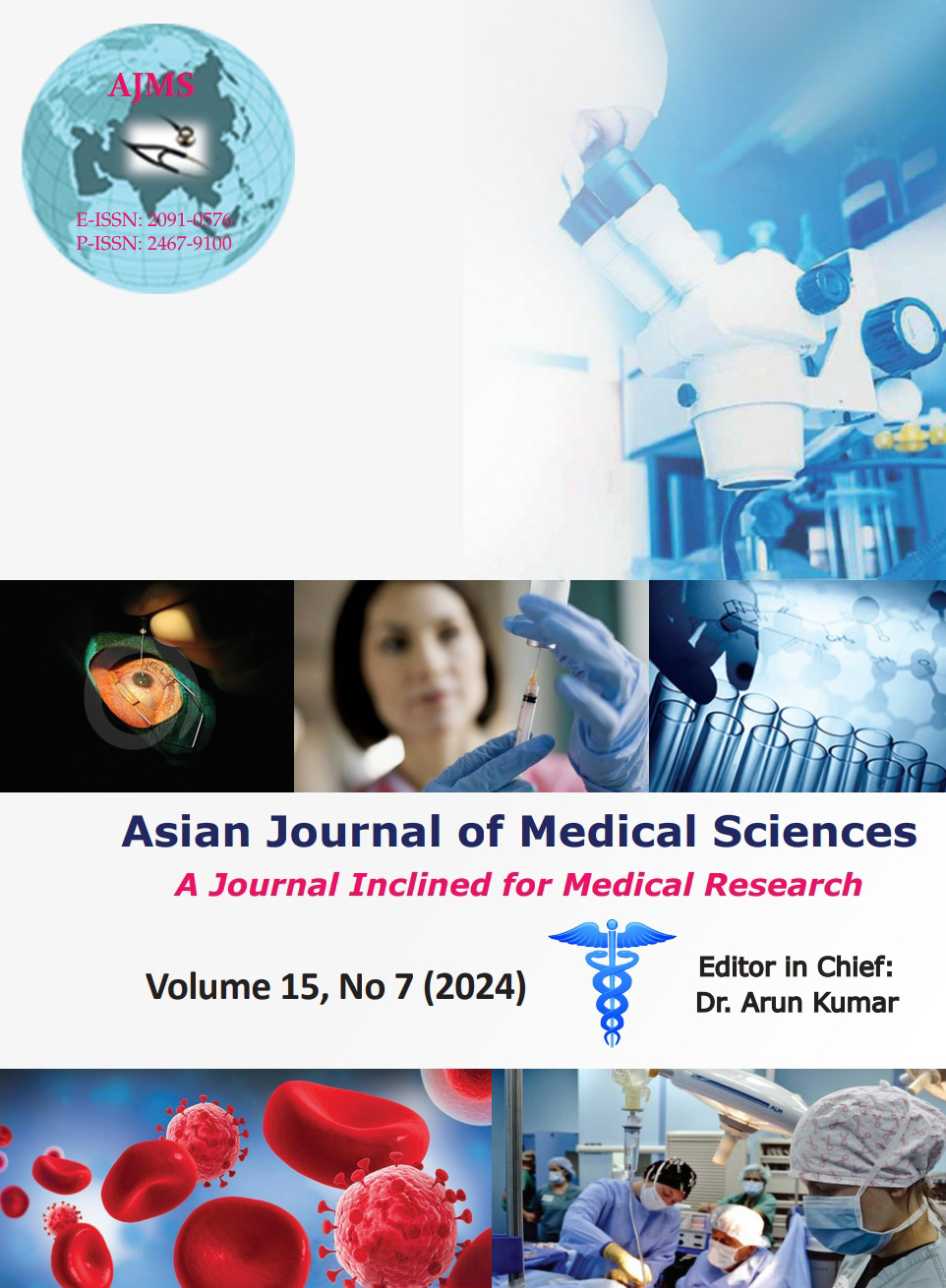Evaluation of different modalities in prevention of seroma formation post-modified radical mastectomy – An observational study from a rural tertiary care center
Keywords:
Seroma; Modified radical mastectomy; Neo adjuvant chemotherapy; QuiltingAbstract
Background: Seroma, a recognized complication of modified radical mastectomy (MRM) delays the administration of adjuvant therapy and also effects adverse events.
Aims and Objectives: This study was conducted to study the sociodemographic and clinical profile of patients developing seroma post MRM and compare the effectiveness of different modalities of seroma prevention since there is a dearth of literature on this matter in our sub-Himalayan region.
Materials and Methods: This was an observational study conducted from February 2021 to August 2022 on 60 women with carcinoma breast who underwent MRM. They were studied for sociodemographic profile, cancer characteristics, and seroma prevention techniques and followed up during the study period. Preventive modalities used were quilting, octreotide therapy, suction drains with early drain removal, passive low suction drains, sharp dissection technique, and sclerotherapy. The results were analyzed using the Statistical Package for the Social Sciences version 22.
Results: The mean age was 49.7±9.4 years, 18.3% had hypertension and 10.0% diabetes mellitus, and 58.3% presented with breast lump. Overall incidence of seroma was 23.3%; the highest was observed in sclerotherapy (50%), and the lowest was in quilting (7.1%) (P=0.235). The presence of hypertension (P=0.026) and the non-administration of neoadjuvant chemotherapy (P=0.010) was significantly associated with developing seroma. Sharp dissection was associated with wound infection (33.3%), sclerotherapy with flap necrosis (50%), and quilting with shoulder stiffness (21.4%).
Conclusion: The lowest incidence of seroma was in quilting and the highest in sclerotherapy. Adverse events such as wound infection, shoulder stiffness, and flap necrosis were the lowest among patients discharged with passive drains and highest in sclerotherapy.
Downloads
Downloads
Published
How to Cite
Issue
Section
License
Copyright (c) 2024 Asian Journal of Medical Sciences

This work is licensed under a Creative Commons Attribution-NonCommercial 4.0 International License.
Authors who publish with this journal agree to the following terms:
- The journal holds copyright and publishes the work under a Creative Commons CC-BY-NC license that permits use, distribution and reprduction in any medium, provided the original work is properly cited and is not used for commercial purposes. The journal should be recognised as the original publisher of this work.
- Authors are able to enter into separate, additional contractual arrangements for the non-exclusive distribution of the journal's published version of the work (e.g., post it to an institutional repository or publish it in a book), with an acknowledgement of its initial publication in this journal.
- Authors are permitted and encouraged to post their work online (e.g., in institutional repositories or on their website) prior to and during the submission process, as it can lead to productive exchanges, as well as earlier and greater citation of published work (See The Effect of Open Access).




